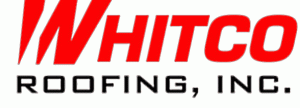Commercial Roofing Professionals
Exclusive Interview with Whitco Roofing Incorporated
Recently we had the privilege of interviewing a highly respected corporate member of Whitco Roofing Incorporated. Whitco Roofing, Inc. is a large scale commercial roofing company who works with respectable organizations such as Sysco Foods, YKK, Westin Hotels, and the City of Columbus.
Commercial Roofing Professionals (CRP) – Tell us about your company’s background?
Whitco Roofing - Well, our President and CEO has well over a decade of experience designing roofs for commercial projects. He spent several years as a consultant for the Garland Company, which is a well known leader in the commercial roofing industry. So, starting from the head of our company, our President knows the commercial roofing industry inside and out.
He originally started Whitco Roofing to better serve his clients, and to vastly improve the flaws he experienced throughout his many years in the industry. His goal was to provide clients with “quality” products and services, which would not only meet their needs, but their budget as well. His personal touch and passion for perfection, has lead Whitco Roofing to become one of the best service providers in the industry. Many business owners, facility manager, property managers, investors, and others have benefited from Whitco Roofing unique building envelope concept, professionalism, and expertise in the industry.
Commercial Roofing Professionals (CRP) - What Exactly Does Whitco Roofing Do?
Whitco Roofing - Well, we are a full-service commercial roofing contractor which means we work with our clients to develop long-term roof asset management programs. We can help out with any phase of a project, including preventive maintenance, restoration, repair, and replacement. We recently adapted to the green movement, and have an energy management team that works closely with clients to provide long term energy savings. Our services are endless; we have the right roof solution for any scenario. We are not simply selling roofs, we are selling roof solutions.
Commercial Roofing Professionals (CRP) - What Kind of Roofing Does Whitco Do? What Types of Roofs Do You Work With?
Whitco Roofing - We work with all types of institutional, industrial, and commercial roofs. From metal to built-up, modified bitumen, single-ply (TPO, PVC, and EPDM), shingles, slate, Spanish time etc.. We install roof gardens, solar roof systems, skylights, coatings, fleeceback, insulation and much more. Our abilities and product line is endless, we provide answers to any commercial roof problem.
Commercial Roofing Professionals (CRP) - What Area Does Whitco Roofing Service?
Whitco Roofing - We provide quality services to the entire Southeastern United States. Our corporate office is located in Atlanta, GA.
Commercial . Institutional . Industrial
T: 1.888.399.2221
P: 770.644.0521
Green Solutions . Energy Upgrades . Energy Management

